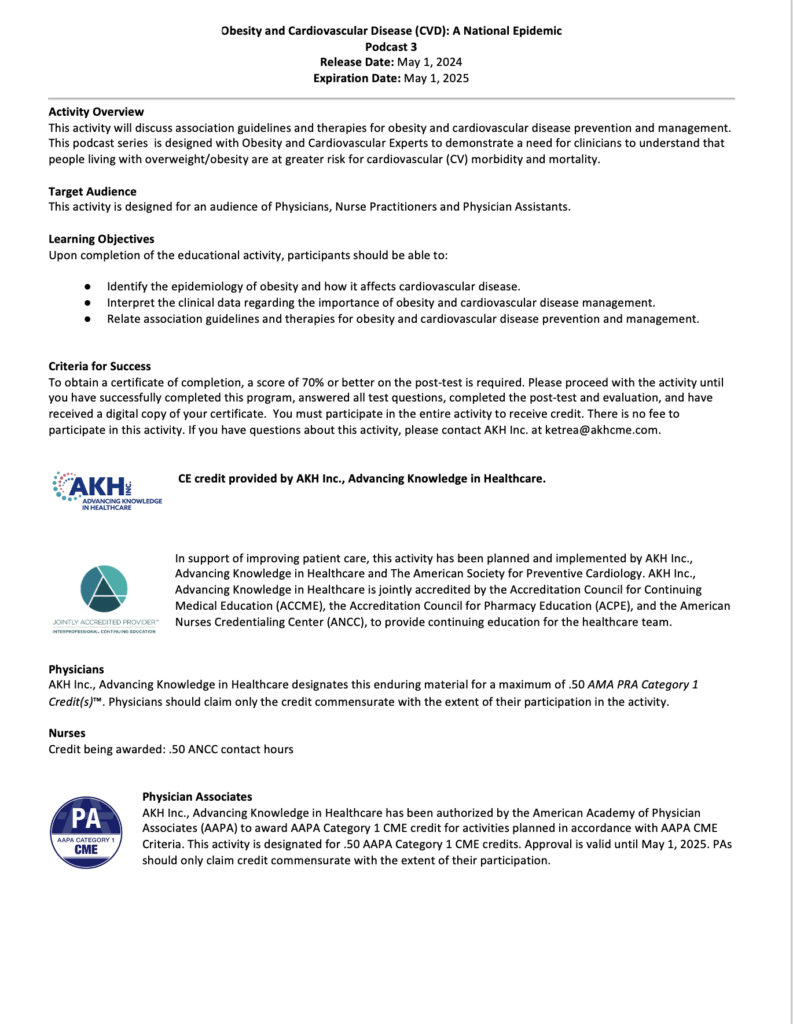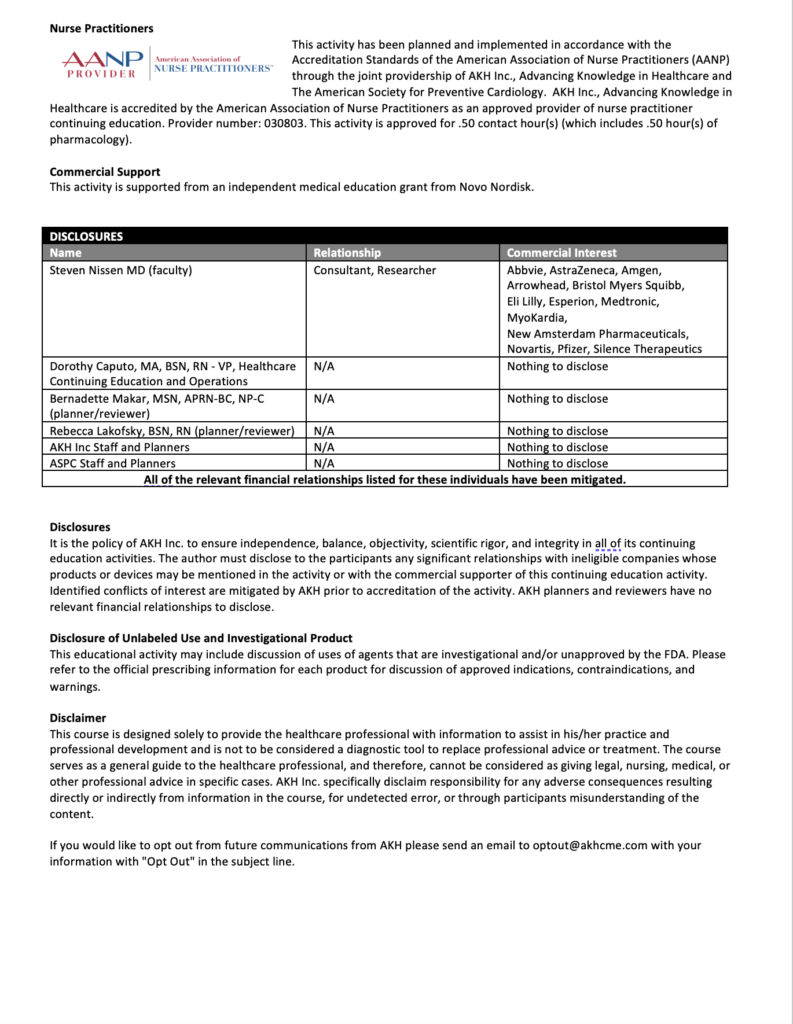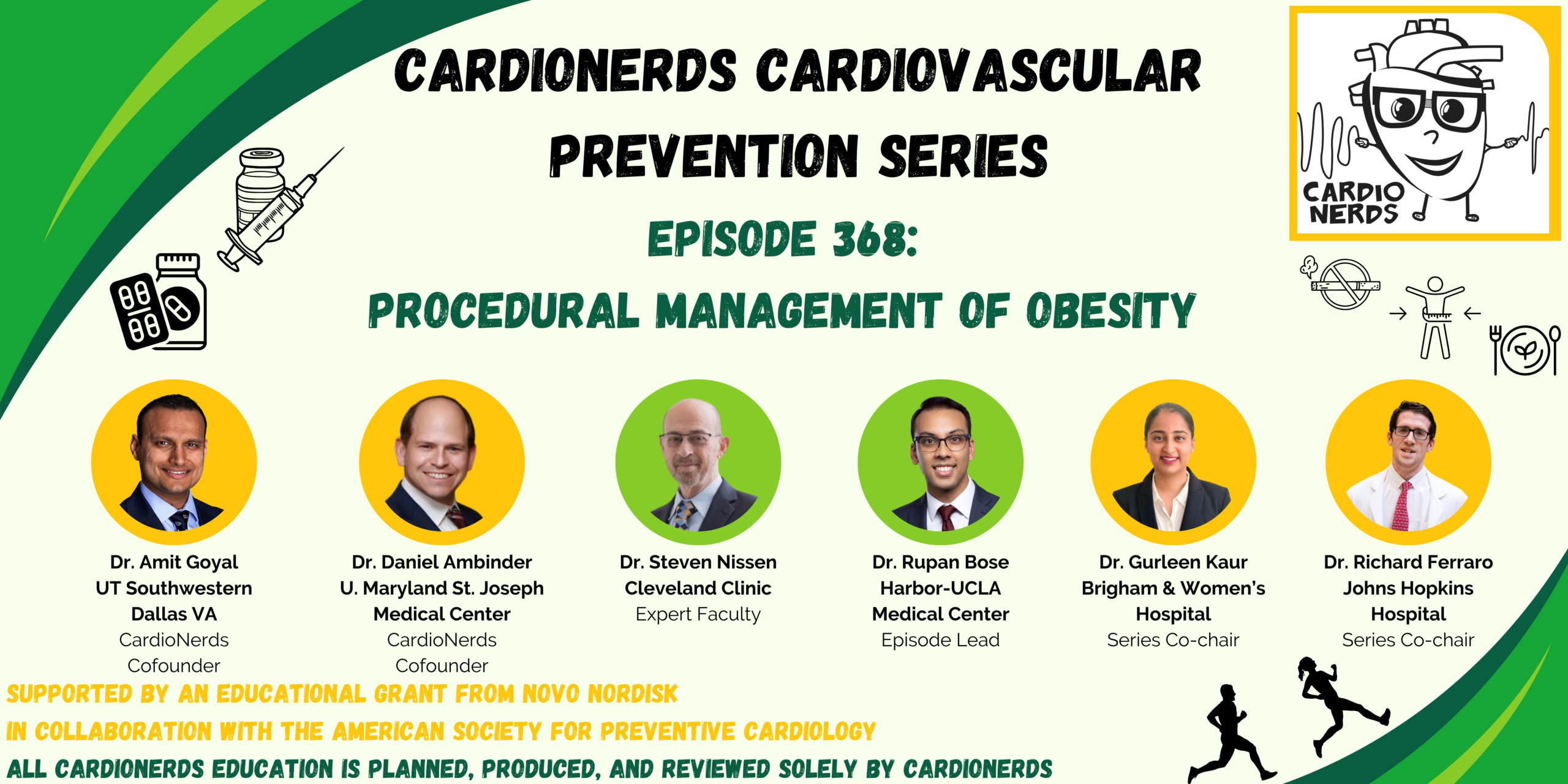Cardionerds: A Cardiology Podcast

368. Obesity: Procedural Management of Obesity with Dr. Steve Nissen


CardioNerds (Drs. Richard Ferraro, Gurleen Kaur, and Rupan Bose) discuss the growing epidemic of obesity and dive into the role of its procedural management with Dr. Steve Nissen, Chief Academic Officer at the Cleveland Clinic HVTI and past president of the American College of Cardiology. This is an exciting topic that reflects a major inflection point in cardiovascular care. In this episode, we discuss the importance of addressing obesity in cardiovascular care, as it is a major driver of cardiovascular disease and the progression of associated cardiovascular comorbidities. We look at the role of bariatric surgery and its ability to produce sustained weight loss. Finally, we look into the emerging role of new medical therapies such as GLP1 and GIP agonist medications. Notes were drafted by Dr. Rupan Bose and episode audio was edited by CardioNerds Intern Dr. Atefeh Ghorbanzadeh.
This episode was produced in collaboration with the American Society of Preventive Cardiology (ASPC) with independent medical education grant support from Novo Nordisk. See below for continuing medical education credit.
Claim CME for this episode HERE.
US Cardiology Review is now the official journal of CardioNerds! Submit your manuscript here.

CardioNerds Prevention Page
CardioNerds Episode Page
CardioNerds Academy
Cardionerds Healy Honor Roll
CardioNerds Journal Club
Subscribe to The Heartbeat Newsletter!
Check out CardioNerds SWAG!
Become a CardioNerds Patron!
Pearls and Quotes – Procedural Management of Obesity with Dr. Steve Nissen
- Obesity is associated with adverse cardiovascular outcomes. Returning to a healthy weight can largely prevent the downstream consequences of obesity.
- Regarding lifestyle modifications, diet alone is insufficient in sustaining prolonged weight loss. It is associated with short-term weight loss, but it is generally necessary to supplement with exercise and activity to ensure sustained weight loss.
- Bariatric surgery should be considered for patients with BMI ≥40 kg/m2 or BMI ≥35 kg/m2 with obesity-related comorbid conditions who are motivated to lose weight and who have not responded to behavioral treatment with or without pharmacotherapy.
- New emerging medications, including GLP1 receptor agonists, GIP receptor agonists, and glucagon receptor agonists, are beginning to approach weight loss levels that were previously only seen with bariatric surgery. Further research in this dynamic area is ongoing.
Show notes – Procedural Management of Obesity with Dr. Steve Nissen
Notes drafted by Dr. Rupan Bose.
What is the role of obesity in the burden of cardiovascular disease, and why is it so important for CardioNerds to address it?
- According to the AHA, approximately 2.8 to 3.5 billion people worldwide are either overweight or obese. It is estimated that by 2030, 30% of people in the US will have a BMI greater than 30.
- Adipose tissue is associated with cytokine release. Cytokines, in turn, can activate and increase levels of IL-1 beta, IL-6, and CRP, leading to an increased inflammatory state. This pro-inflammatory state then accelerates the rate of cardiovascular disease.
- Obesity is also associated with significant joint and orthopedic diseases, which further impact patients’ quality of life and morbidity.
- Additionally, obesity is associated with NASH cirrhosis. These adverse liver outcomes hold additional significant systemic implications and morbidity.
How do you determine one’s goal weight and goal BMI? Is BMI a good standard for measuring obesity?
- BMI is a variable of both weight and height. However, it cannot differentiate those whose weight is from adipose tissue versus from muscle mass. Therefore, BMI measurements can sometimes be misleading. Waist circumference may be a better measurement standard for obesity and risk assessment.
- The “apple shape” body type, with more abdominal fat, is associated with higher inflammation and cardiovascular risk than the “pear-shaped” body type, which is where there is more fat deposition in the buttocks and thighs. A fat distribution that is more centralized corresponds with greater cardiovascular risk.
- “Normal” BMI and “normal” waist circumference can differ based on ethnicity. For example, a BMI of 22.6 in South Asians carries a similar risk to a BMI of 30 in White European patients. Therefore, providers must remain cognizant of these differences when making individual patient recommendations.
Does childhood obesity correlate with obesity at later ages? At what age should we start screening for and addressing obesity?
- Childhood obesity, or obesity at a young age, often correlates with continued obesity later in life. But it is interesting that if one can return to a healthy body weight at some point in their life, one can largely prevent the downstream consequences of obesity
- The USPSTF recommends clinicians screen for obesity in children and adolescents age 6 and older and offer behavioral interventions to promote improvements in weight status (grade B recommendation)
What procedures or surgeries are available to patients with obesity?
- Bariatric surgery is an excellent option with great outcomes if done for the right patient.
- The 2013 AHA/ACC/TOS guidelines for the management of overweight and obesity in adults recommend bariatric surgery for patients with BMI ≥40 kg/m2 or BMI ≥35 kg/m2 with obesity-related comorbid conditions who are motivated to lose weight and who have not responded to behavioral treatment with or without pharmacotherapy.
- Several studies have shown that patients with bariatric surgery had a huge reduction in myocardial infarction, stroke, kidney disease, and death.
- Bariatric surgery can help address other cardiovascular comorbidities. For example, the STAMPEDE trial (Schauer, R et al.) demonstrated that bariatric surgery plus intensive medical therapy was more effective than intensive medical therapy alone in decreasing or, in some cases, resolving hyperglycemia.
- Additionally, the magnitude of weight loss from bariatric surgery is often greater than the absolute magnitude of weight loss through medical therapy alone. Therefore, for patients with a very high BMI, bariatric surgery may be better suited to achieve the necessary weight loss.
What emerging medications are available to patients with obesity? And what medications are just around the corner?
- GLP1 agonists, or dual GIP-GLP1 receptor agonists, drugs are associated with approximately 20% reduction in body weight.
- In the SELECT trial, semaglutide was associated with a 9.3% reduction in body weight (Please see GLP1 series for additional details!).
- In the SURMOUNT-1 trial, tirzepatide was associated with a 22% reduction in body weight.
- Future trials will look at triple agonists that combine GLP1, GIP, and glucagon agonist properties. One such drug is retatrutide, which previously demonstrated a 24% (and approximately 28.5% in females) reduction in body weight. These medications are approaching similar weight loss magnitudes to bariatric surgery (a Roux en Y procedure achieves approximately 25% weight loss on average), though additional studies are ongoing.
What other strategies can one use to lower body weight and maintain that weight loss?
- Diet alone is not sustainable in reducing weight and keeping weight off. Unfortunately, the body subconsciously activates adaptive responses that down-regulate metabolism, which in turn burns fewer calories.
- Therefore, exercise and activity play a key role in continuing to burn calories, allowing for sustained weight loss.
- All patients should, therefore, be counseled on both diet and exercise strategies to address obesity and weight loss.
Discussing weight and body image is often a sensitive subject and can carry a stigma for some patients. What are some recommendations on how we can address these topics in a safe and supportive manner?
- It is important to create a safe, supportive, and non-judgmental space when discussing weight with patients.
- We should also make an effort to understand the specific drivers of each individual patient’s weight gain. Some drivers include emotional stress, socio-economic factors, lifestyle barriers, etc. By understanding each specific driver, we can be more targeted in our approach and build more individualized plans with our patients.
- We can also recruit other clinical team members to assist the patient in their weight loss journey. Some such teammembers include dieticians, psychiatrists, social workers, etc.
References – Procedural Management of Obesity with Dr. Steve Nissen
Jastreboff, A. M., Aronne, L. J., Ahmad, N. N., Wharton, S., Connery, L., Alves, B., … & Stefanski, A. (2022). Tirzepatide once weekly for the treatment of obesity. New England Journal of Medicine, 387(3), 205-216.
https://www.nejm.org/doi/full/10.1056/NEJMoa2206038
Lincoff, A. M., Brown-Frandsen, K., Colhoun, H. M., Deanfield, J., Emerson, S. S., Esbjerg, S., … & Ryan, D. H. (2023). Semaglutide and cardiovascular outcomes in obesity without diabetes. New England Journal of Medicine.
https://www.nejm.org/doi/full/10.1056/NEJMoa2307563
Schauer, P. R., Bhatt, D. L., Kirwan, J. P., Wolski, K., Aminian, A., Brethauer, S. A., … & Kashyap, S. R. (2017). Bariatric surgery versus intensive medical therapy for diabetes—5-year outcomes. New England Journal of Medicine, 376(7), 641-651.
https://www.nejm.org/doi/full/10.1056/nejmoa1600869
Jensen, M. D., Ryan, D. H., Apovian, C. M., Ard, J. D., Comuzzie, A. G., Donato, K. A., … & Yanovski, S. Z. (2014). 2013 AHA/ACC/TOS guideline for the management of overweight and obesity in adults: a report of the American College of Cardiology/American Heart Association Task Force on Practice Guidelines and The Obesity Society. Journal of the American college of cardiology, 63(25 Part B), 2985-3023.
Powell-Wiley, T. M., Poirier, P., Burke, L. E., Després, J. P., Gordon-Larsen, P., Lavie, C. J., … & American Heart Association Council on Lifestyle and Cardiometabolic Health; Council on Cardiovascular and Stroke Nursing; Council on Clinical Cardiology; Council on Epidemiology and Prevention; and Stroke Council. (2021). Obesity and cardiovascular disease: a scientific statement from the American Heart Association. Circulation, 143(21), e984-e1010.
Lopez-Jimenez, F., Almahmeed, W., Bays, H., Cuevas, A., Di Angelantonio, E., le Roux, C. W., … & Wilding, J. P. (2022). Obesity and cardiovascular disease: mechanistic insights and management strategies. A joint position paper by the World Heart Federation and World Obesity Federation. European Journal of Preventive Cardiology, 29(17), 2218-2237.
Sjöström, L., Peltonen, M., Jacobson, P., Sjöström, C. D., Karason, K., Wedel, H., … & Carlsson, L. M. (2012). Bariatric surgery and long-term cardiovascular events. Jama, 307(1), 56-65.
Liakopoulos, V., Franzén, S., Svensson, A. M., Sattar, N., Miftaraj, M., Björck, S., … & Eliasson, B. (2020). Renal and cardiovascular outcomes after weight loss from gastric bypass surgery in type 2 diabetes: cardiorenal risk reductions exceed atherosclerotic benefits. Diabetes Care, 43(6), 1276-1284.
Eisenberg, Dan, et al. 2022 American Society of Metabolic and Bariatric Surgery (ASMBS) and International Federation for the Surgery of Obesity and Metabolic Disorders (IFSO) indications for metabolic and bariatric surgery. (2023): 3-14. doi: https://doi.org/10.1016/j.soard.2022.08.013








 Visit Podcast Website
Visit Podcast Website RSS Podcast Feed
RSS Podcast Feed Subscribe
Subscribe
 Add to MyCast
Add to MyCast